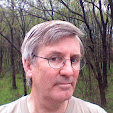En route to our first stop (Museo de Sito Huallamarca) we passed several chifa, Chinese-Peruvian restaurants, reminders of the large wave of Chinese emigrants who came to Peru in the nineteenth-century to work in sugar plantations and guano mines. I asked our guide, Luis Villacorta (Universidad Católica Sedes Sapientiae), about the etymology of chifa and he suggested that it is a conflation of “rice” and “to eat.”
The scene below, taken from the top of the Huallamarca site, offered a brief moment to reflect on more extended periods of time. In chronological order it shows:
--> Two trees from the genus Araucaria, a “living fossil” that dates back to the early Mesozaic Age (a few hundred million years ago). Most of the surviving species of Araucaria are found in New Guinea, New Caledonia, Australia, Chile and Brazil – all once part of the Gondwana supercontinent.
--> Huallamarca Temple (Hualla Culture, approximately 2000 years ago)
--> Contemporary Lima and some K.U. visitors with Mr. Villacorta
The Museo Arqueológico Rafael Larco Herrera, a marvelous building surrounded by orchids, houses a staggering collection of Peruvian archeological works. A few (including a more recent ornamental carving) that particularly caught my eye:
Breastplate made of Chrysocolla and shell (detail). Formative epoch of the Cupisnique (1250 BCE-1 CE)
Large stone carving of the head of a moon animal. Height of Recuay culture (1 - 800 CE)
A wood carving with an angelic youth ensconced in a burst of Rococo ornament.










No comments:
Post a Comment